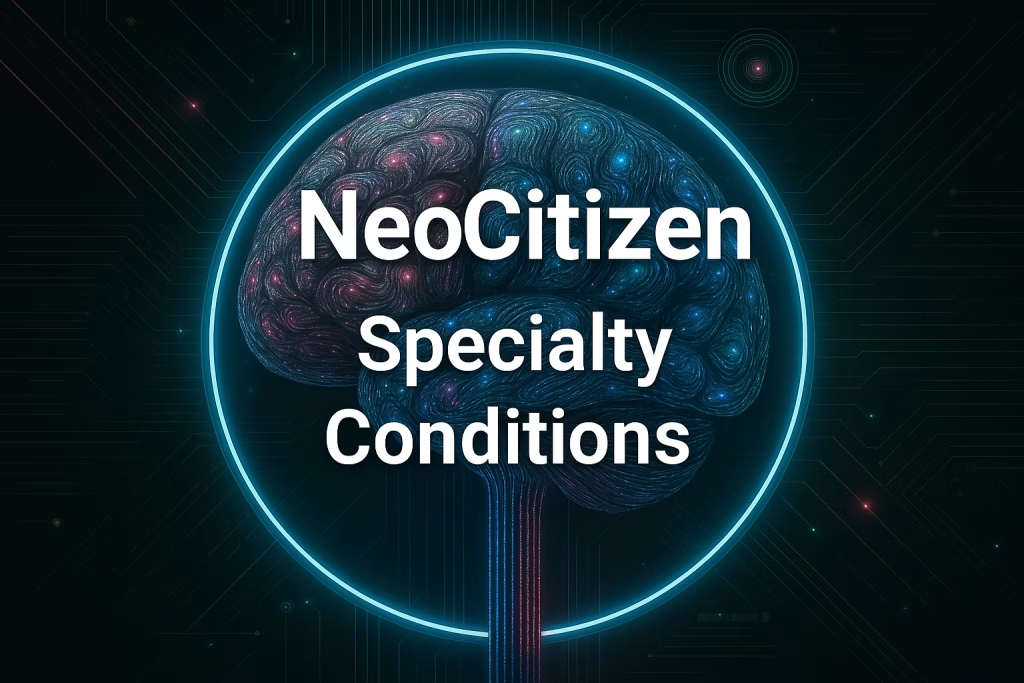
🧬 Introduction to Amyloidosis
Amyloidosis is a rare but serious condition where abnormal proteins, called amyloids, build up in organs and tissues. 🧠❤️🫀 Over time, these deposits can damage organs and lead to life-threatening complications if not treated early.
Even though amyloidosis is not as common as other chronic diseases, its effects can be devastating — especially because early symptoms are often vague or mistaken for other problems. That’s why understanding this condition is so important. 🩺
In this guide, you’ll learn everything you need to know about amyloidosis:
- What it is 🧪
- How it affects the body 🫁
- How it’s diagnosed 🩻
- Modern treatment options including specialty medications like VYNDAMAX, VYNDAQEL, ONPATTRO, and AMVUTTRA 💊
- Tips for living with amyloidosis 💬
Whether you’re a patient, caregiver, or someone wanting to stay informed, this easy-to-follow guide is here to help. 🌟
🧬 What is Amyloidosis?
Amyloidosis happens when abnormal proteins called amyloid build up in different parts of the body. 🧪 These proteins are usually made in the bone marrow and can collect in the heart, kidneys, liver, nervous system, and digestive tract. Over time, this buildup makes it hard for organs to work properly. 🫀🧠🧹
There are several types of amyloidosis, and each type affects the body differently:
- AL (Primary) Amyloidosis:
- Caused by abnormal antibodies made in the bone marrow.
- Most common type in the U.S. 🇺🇸
- AA (Secondary) Amyloidosis:
- Linked to chronic infections or inflammatory diseases like rheumatoid arthritis.
- More common worldwide 🌍.
- ATTR (Transthyretin) Amyloidosis:
- Caused by a change (mutation) in the transthyretin (TTR) protein.
- Two types: hereditary (inherited) and wild-type (develops with age). 👨👩👧👦
- Hereditary or Familial Amyloidosis:
- Passed down through families.
- Caused by genetic mutations affecting protein production. 🧬
Each form of amyloidosis is serious, but with early diagnosis and proper treatment, many patients can manage their symptoms and improve their quality of life. 🌟
🔍 Causes and Risk Factors of Amyloidosis
Understanding what causes amyloidosis and who is most at risk can help with early detection and better outcomes. 🧠🩺
🔹 Causes of Amyloidosis
- Abnormal Protein Production:
Amyloidosis happens when proteins misfold and clump together instead of breaking down normally. - Bone Marrow Disorders:
Conditions like multiple myeloma can cause AL amyloidosis. 🧬 - Chronic Inflammatory Conditions:
Long-term illnesses like rheumatoid arthritis, tuberculosis, and inflammatory bowel disease can trigger AA amyloidosis. 🔥 - Genetic Mutations:
In hereditary ATTR amyloidosis, faulty genes cause the liver to produce unstable transthyretin (TTR) proteins. 🧬👨👩👧👦
🔹 Risk Factors for Amyloidosis
- Age:
Most cases occur in people over 60 years old. 🎂 - Gender:
Men are more likely to develop amyloidosis than women. 👨 - Family History:
Having a close relative with hereditary amyloidosis raises your risk. 👨👩👧👦 - Chronic Diseases:
Long-standing infections or inflammatory diseases increase the chance of developing AA amyloidosis. 🦠 - Ethnicity:
Certain forms of hereditary ATTR amyloidosis are more common in African American and Mediterranean populations. 🌍
Knowing these causes and risks can empower you to seek early medical advice if symptoms appear. Early treatment makes a big difference! 🌟
🚨 Common Symptoms of Amyloidosis
Amyloidosis can be tricky to spot because its symptoms often look like other common health problems. 😵💫 Symptoms depend on which organs are affected, and they can vary widely from person to person.
Here are some of the most common signs to watch for:
🔹 General Symptoms
- Fatigue and weakness 😴
- Unexplained weight loss ⚖️
- Swelling in legs, ankles, or abdomen (edema) 🦵
- Shortness of breath 🫁
- Dizziness or feeling faint 😵
🔹 Symptoms by Affected Organ
- Heart:
- Irregular heartbeat (arrhythmia) ❤️
- Heart failure symptoms like swelling and breathlessness 🫀
- Kidneys:
- Protein in the urine (foamy urine) 🧼
- Swelling from fluid retention 💧
- Nervous System:
- Numbness, tingling, or pain in hands and feet (peripheral neuropathy) ✋🦶
- Carpal tunnel syndrome 🤚
- Digestive System:
- Diarrhea or constipation 🚽
- Difficulty swallowing 🍽️
- Feeling full quickly after eating
- Liver and Spleen:
- Enlarged liver (hepatomegaly) or spleen
- Abdominal discomfort or pain 🩻
🔹 Skin and Other Changes
- Easy bruising, especially around the eyes (so-called “raccoon eyes”) 🦝
- Purplish patches or spots on the skin
- Enlarged tongue (macroglossia) 👅
Because amyloidosis can mimic other illnesses, many people experience symptoms for months (or even years) before getting the right diagnosis. 🩺
If you notice several of these symptoms together, it’s important to talk to your doctor right away!
🧪 How Amyloidosis is Diagnosed
Diagnosing amyloidosis can be challenging because its symptoms are often similar to other diseases. 🔍 A correct and early diagnosis is critical to starting the right treatment and protecting your organs. 🛡️
Doctors usually take a step-by-step approach:
🔹 Medical History and Physical Exam
- Detailed History:
Your doctor will ask about your symptoms, family history, and any underlying conditions like infections or inflammatory diseases. 🩺 - Physical Exam:
The doctor will check for signs like swelling, abnormal heart sounds, or signs of nerve damage.
🔹 Lab Tests
- Blood Tests:
- Check for abnormal proteins called light chains.
- Look at kidney and liver function. 🩸
- Urine Tests:
- Detect amyloid proteins in urine. 🚽
🔹 Tissue Biopsy
- Gold Standard Test:
A small tissue sample is taken (from fat, bone marrow, or the affected organ) and stained to look for amyloid deposits under a microscope. 🔬
🔹 Imaging Tests
- Echocardiogram:
Looks at the heart for signs of thickened walls or heart failure. ❤️🫀 - MRI or CT Scan:
Shows detailed images of organs and tissues. 🖥️ - Nuclear Imaging (Scintigraphy):
Special tracers highlight amyloid deposits, especially in the heart. 🔥
🔹 Genetic Testing
- Essential for hereditary ATTR amyloidosis:
Identifies mutations in the transthyretin (TTR) gene. 🧬
Early diagnosis can lead to better treatment outcomes and may even slow the progression of the disease! 🚀
📈 Stages and Prognosis of Amyloidosis
The outlook for people with amyloidosis depends on the type, the organs involved, and how early it is diagnosed. 🩺⏳ Doctors use staging systems to predict how serious the condition is and to guide treatment decisions.
🔹 Staging Systems
Different types of amyloidosis have different staging criteria:
- AL (Primary) Amyloidosis:
- Staged based on heart damage and levels of certain blood proteins (troponin and NT-proBNP). ❤️🧪
- Stage 1 (mild) to Stage 3 (advanced).
- ATTR Amyloidosis:
- May use heart imaging, biomarkers, and genetic testing to assess severity. 🧬🫀
- AA Amyloidosis:
- Staging focuses on kidney function and the amount of protein in the urine. 🧹
🔹 Prognosis Factors
Several factors influence a person’s prognosis:
- Type of Amyloidosis:
AL tends to be more aggressive; ATTR, especially the wild-type, often progresses more slowly. 🐢⚡ - Organs Affected:
Heart involvement usually leads to a more serious outlook. 🫀 - Response to Treatment:
Patients who respond well to therapy often live much longer. 🎯 - Overall Health:
People without major organ damage and other serious illnesses have a better prognosis. 💪
🔹 Life Expectancy
- With early diagnosis and modern treatments, many patients live several years and enjoy a good quality of life. 🌟
- Without treatment, survival can be as short as 6 to 12 months for severe AL amyloidosis with heart failure. 😔
But there’s good news — thanks to new therapies like VYNDAMAX®, VYNDAQEL®, ONPATTRO®, and AMVUTTRA™, survival rates and quality of life are improving for many patients! 🚀💊
💊 Advanced Specialty Treatment Options for Amyloidosis
Treatment for amyloidosis focuses on slowing disease progression, reducing symptoms, and protecting vital organs. 🛡️ Thanks to new advances in medicine, there are now more effective options than ever! 🌟
🔹 Pharmacologic Treatments
- Chemotherapy for AL Amyloidosis:
- Bortezomib, cyclophosphamide, and dexamethasone are used to kill abnormal plasma cells that produce amyloid proteins. 🧬⚡
- TTR Stabilizers for ATTR Amyloidosis:
- VYNDAMAX® (tafamidis meglumine) and VYNDAQEL® (tafamidis) work by stabilizing the transthyretin (TTR) protein to prevent it from misfolding. 🛡️🧬
- RNA Interference Therapies:
- ONPATTRO® (patisiran) and AMVUTTRA™ (vutrisiran) use cutting-edge RNA technology to silence the genes that cause TTR proteins to be made abnormally. 🔬💬
These specialty drugs are changing the way amyloidosis is treated, especially for people with hereditary or wild-type ATTR amyloidosis! 🚀
🔹 Specialty Treatments
- Autologous Stem Cell Transplantation:
- Used mainly for AL amyloidosis patients who are healthy enough for high-dose chemotherapy followed by their own stem cell infusion. 🌱🧪
- Liver Transplant:
- In hereditary ATTR amyloidosis, replacing the liver (which makes the defective TTR protein) can stop disease progression. 🫀➔🫁
- Heart and Kidney Transplants:
- In cases of severe organ damage, transplant surgery can save lives and dramatically improve quality of life. ❤️🧠🦵
🔹 Supportive Care
- Heart Support:
- Diuretics, beta-blockers, and ACE inhibitors to manage heart failure symptoms. ❤️💊
- Kidney Support:
- Dialysis if amyloid damages kidney function. 💧
- Neuropathy and GI Support:
- Pain management, medications for digestive symptoms, and physical therapy. 🖐️🚶♂️🍽️
- Nutrition and Lifestyle Counseling:
- Customized plans to maintain strength and organ health. 🥗🏋️
✨ Today, early and aggressive treatment offers the best hope for controlling amyloidosis and living longer, healthier lives!
🔬 Latest Research and Emerging Treatments for Amyloidosis
Research on amyloidosis is moving fast, bringing new hope to patients worldwide! 🌍 Scientists and doctors are working hard to find better ways to slow down, stop, or even reverse the effects of amyloidosis. 🚀
Here are some of the exciting developments:
🔹 Gene Silencing Therapies
- ONPATTRO® and AMVUTTRA™ were just the beginning!
- New RNA-based treatments are being developed to shut down the production of abnormal TTR proteins even earlier and more precisely. 🧬💬
🔹 Gene Editing (CRISPR Technology)
- Researchers are exploring the use of CRISPR to correct genetic mutations that cause hereditary ATTR amyloidosis. 🛠️🧪
- Early studies show promising results in stopping disease at its source!
🔹 Monoclonal Antibody Therapies
- Antibody treatments are being tested to directly target and clear amyloid deposits from the body. 🧹⚔️
- These therapies could reduce existing damage and improve organ function.
🔹 New Small Molecule Drugs
- Scientists are working on new stabilizers and inhibitors that are easier to take (like once-daily pills) and more powerful at preventing amyloid buildup. 💊✨
🔹 Ongoing Clinical Trials
- Trials for next-generation RNAi drugs, oral TTR silencers, and combination therapies are underway. 🔍
- Patients may qualify to join clinical trials to access cutting-edge treatments before they’re widely available. 🏥
🔹 Improving Early Diagnosis
- Research is also focusing on better imaging techniques and biomarkers that could catch amyloidosis earlier — even before serious symptoms appear. 🖥️🧪
The future is bright! 🌟 Thanks to these advances, more patients are living longer, healthier lives with amyloidosis than ever before.
🌿 Living with Amyloidosis: Lifestyle Tips and Coping Strategies
Living with amyloidosis can be challenging, but with the right lifestyle adjustments and support, many people enjoy fulfilling lives. 🌟 Small daily habits can make a big difference in how you feel and how well your body copes with the condition. 🛡️
Here are some helpful tips:
🔹 Nutrition and Diet
- Eat a heart-healthy diet: Low in salt, sugar, and saturated fat to protect your heart and kidneys. 🥗💚
- Stay hydrated: Helps with kidney function and overall health. 🚰
- Small, frequent meals: Easier to digest if you experience stomach issues. 🍽️
🔹 Manage Physical Activity
- Gentle exercise: Activities like walking, stretching, and yoga can help maintain strength without overexerting your heart. 🚶♀️🧘♂️
- Listen to your body: Rest when you’re tired — fatigue is a real part of amyloidosis. 💤
🔹 Monitor and Manage Symptoms
- Check for swelling: Regularly check your ankles, legs, and abdomen for fluid buildup. 💧
- Track your weight: Sudden changes can signal worsening heart or kidney function. ⚖️
🔹 Mental and Emotional Well-Being
- Join a support group: Connecting with others facing amyloidosis can help you feel less alone. 🤝
- Counseling or therapy: Talking to a mental health professional can help manage anxiety or depression. 🧠❤️
🔹 Partner with Your Healthcare Team
- Regular appointments: Stay on top of lab tests, imaging, and medication management. 📋🩺
- Specialist care: Work with cardiologists, nephrologists, neurologists, and amyloidosis specialists for the best outcomes. 🏥
🔹 Stay Informed
- Keep learning: Knowledge about your condition helps you make empowered decisions. 📚🧠
- Ask about clinical trials: You might qualify for new treatment options that could improve your quality of life. 🚀
✨ You’re not alone in this journey. With modern therapies and a strong support system, many people with amyloidosis lead active, meaningful lives!
🏥 When to Seek Specialist Care
Amyloidosis is a complex disease that often requires a team of experts to manage properly. 🧑⚕️👩⚕️ Knowing when to seek specialist care can make a huge difference in your treatment success and quality of life. 🌟
Here’s when you should see a specialist:
🔹 If You Notice New or Worsening Symptoms
- Shortness of breath, swelling, numbness, or unexplained weight loss should prompt a visit to your doctor right away. 🫁🦶
- Early action can prevent serious organ damage! ⚡
🔹 After a New Diagnosis
- If you’ve just been diagnosed with amyloidosis, it’s important to see specialists familiar with the disease, such as:
- Hematologists (blood and plasma cell disorders) 🩸
- Cardiologists (heart involvement) ❤️
- Nephrologists (kidney care) 🧹
- Neurologists (nerve damage) 🧠
- Genetic counselors (if hereditary ATTR amyloidosis is suspected) 🧬
🔹 If Standard Treatments Are Not Working
- If you’re not responding to initial therapy, you may need:
- Access to clinical trials 🧪
- More aggressive therapies like stem cell transplant or new specialty medications 💉
🔹 For Long-Term Monitoring
- Amyloidosis often requires ongoing checkups to monitor:
- Heart function 🫀
- Kidney health 🩺
- Nerve symptoms 🖐️
- Levels of amyloid in the body
🔹 If You’re Considering a Transplant
- Organ damage from amyloid buildup may lead to the need for a heart, liver, or kidney transplant. 🌱
- Transplant centers often have special programs for amyloidosis patients.
✨ Working closely with a team of specialists ensures you get the most advanced treatments and personalized care tailored to your specific type of amyloidosis.
❓ Frequently Asked Questions (FAQs) About Amyloidosis
Amyloidosis can seem overwhelming, but getting clear answers helps you take control. 💬 Here are some of the most common questions people ask:
🔹 Can amyloidosis be cured?
- Currently, there is no complete cure for most types of amyloidosis. 😔
- However, many treatments — like VYNDAMAX®, VYNDAQEL®, ONPATTRO®, and AMVUTTRA™ — can slow the disease and dramatically improve quality of life. 🌟
- Some patients with AL amyloidosis who undergo successful stem cell transplant may achieve long-term remission. 🌱
🔹 How is amyloidosis different from cancer?
- Amyloidosis is caused by protein misfolding, not uncontrolled cell growth like cancer. 🧬
- However, AL amyloidosis is often linked to plasma cell disorders, which are related to blood cancers like multiple myeloma. 🩸
🔹 How long can you live with amyloidosis?
- Life expectancy varies based on the type, severity, and how early treatment starts. 📆
- Early diagnosis and new therapies are helping patients live many more years with a good quality of life. 🎉
🔹 What are the side effects of amyloidosis treatments?
- Common side effects depend on the specific treatment but may include:
- Fatigue 😴
- Nausea 🤢
- Infusion reactions 💉
- Risk of infections 🦠
- Your healthcare team can help manage side effects and adjust treatment if needed. 🛡️
🔹 Is hereditary amyloidosis preventable?
- If you have a family history, genetic testing can identify your risk early. 🧬
- While you can’t prevent the genetic mutation, early monitoring and treatment can delay or reduce symptoms. 🕒
🔹 How do I find a doctor who treats amyloidosis?
- Look for medical centers that specialize in amyloidosis, often part of large hospitals or universities. 🏥
- Your primary care doctor can also refer you to specialists like hematologists, cardiologists, or genetic counselors. 🤝
Getting the right information empowers you to make the best decisions for your health. 📚💪
🌟 Final Thoughts on Amyloidosis
Amyloidosis may be rare and serious, but with today’s medical advances, there’s more hope than ever for those affected. 🛡️✨ Early diagnosis, advanced specialty treatments like VYNDAMAX®, VYNDAQEL®, ONPATTRO®, and AMVUTTRA™, and expert care can make a powerful difference in outcomes and quality of life. 🚀
Here’s what to remember:
🔹 Stay Alert for Symptoms
- Recognize early warning signs like fatigue, swelling, or unexplained weight loss. 🛎️
- Act quickly — early treatment protects your heart, kidneys, and nerves. ❤️🧠🧹
🔹 Partner with a Specialist Team
- Work with hematologists, cardiologists, nephrologists, and neurologists who understand amyloidosis. 🏥👩⚕️
- Specialized care leads to the best results!
🔹 Take Advantage of New Treatments
- New therapies are changing the future for amyloidosis patients. 💉🔬
- Ask your doctor about the latest options and clinical trials available to you.
🔹 Focus on Whole-Body Wellness
- Maintain a healthy lifestyle, stay active within your limits, and care for your emotional health too. 🥗🧘♀️😊
🔹 You Are Not Alone
- Support groups, advocacy organizations, and specialized clinics offer help, education, and encouragement. 🤝💬
✨ Amyloidosis is challenging, but it is manageable.
With knowledge, the right treatments, and a strong healthcare team, you can live a vibrant, fulfilling life. 🌟💪












